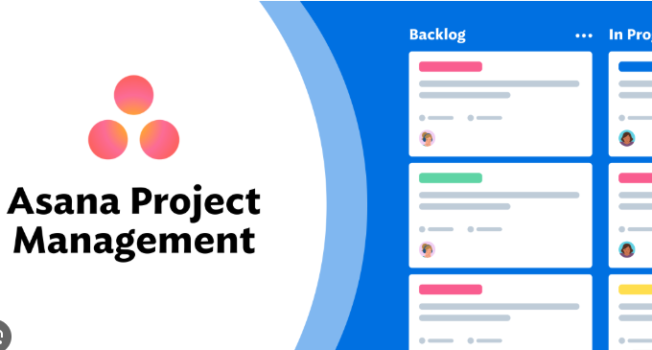Get Started with Asana
Beginners, Intermediates, and Experts
Introduction
Asana is a powerful project management tool that helps individuals and teams plan, organize, and execute tasks effectively. With its intuitive design and robust functionality, Asana is used by organizations worldwide to streamline workflows and improve collaboration.
Whether you’re managing a personal to-do list, coordinating a small team, or overseeing a complex enterprise project, Asana provides the tools to keep everyone on the same page. Its flexibility, combined with features like customizable views, integrations, and automation, makes it a go-to platform for productivity and project success.
Purpose
Asana addresses common challenges in task and project management by:
- Eliminating Confusion: Centralizing tasks, updates, and communication.
- Enhancing Productivity: Automating repetitive tasks and tracking progress in real time.
- Facilitating Collaboration: Allowing team members to share updates, files, and feedback seamlessly.
From managing deadlines to aligning cross-functional teams, Asana simplifies workflows, saves time, and enhances team efficiency.
Key Features
- Task Management: Create, assign, and prioritize tasks with due dates and subtasks.
- Project Views: Use List, Board (Kanban), Timeline (Gantt), and Calendar views to visualize your projects.
- Automation: Automate repetitive tasks with customizable rules and workflows.
- Team Collaboration: Share files, add comments, and track progress without switching tools.
- Goals and Portfolios: Set and track team or organizational objectives for strategic alignment.
- Custom Fields: Add specific fields to tasks for tracking status, priority, or other metrics.
- Integration Support: Connect with tools like Slack, Google Workspace, Zoom, and GitHub.
- Reporting: Get insights into project performance with dashboards and reports.
Cost
Asana offers several pricing tiers:
- Free Plan: Ideal for individuals and small teams; includes basic task and project management features.
- Premium Plan: $10.99/month per user, offering Timeline view, custom fields, and more.
- Business Plan: $24.99/month per user, with advanced features like Goals, Portfolios, and workload management.
- Enterprise Plan: Custom pricing for organizations needing enhanced security and admin controls.
Levels of Expertise
- Beginners: Use the free plan to organize personal tasks or manage simple team projects.
- Intermediate Users: Leverage custom fields, project templates, and automations for efficient workflows.
- Advanced Users: Utilize features like Portfolios, Goals, and integrations to manage complex projects and cross-functional teams.
Use Cases
Beginners:
- Personal Task Management: Create a daily to-do list to stay organized.
- Team Collaboration: Assign tasks and track basic project progress.
Intermediate Users:
- Marketing Campaigns: Use Timeline view to coordinate deadlines and deliverables.
- Event Planning: Manage schedules, vendor coordination, and resources in one platform.
Advanced Users:
- Product Development: Track product roadmaps with Portfolios and manage sprints using Kanban boards.
- Cross-Functional Collaboration: Align multiple teams using Goals and reporting dashboards.
GitHub
While Asana does not have a public GitHub repository, developers can access its API to build custom integrations. Visit Asana API Documentation for more details.
Website
Visit the official Asana website for more information.
Getting Started
- Sign Up: Go to Asana and create a free account.
- Choose a Project Template: Use pre-built templates or start from scratch.
- Create Tasks: Add tasks, assign team members, and set due dates.
- Customize Views: Switch between List, Board, Calendar, and Timeline views.
- Invite Team Members: Share your project and collaborate in real time.
Setting Up/Configuration
- System Requirements: Asana is web-based, with mobile apps available for iOS and Android.
- Workspaces: Group related projects into workspaces or teams for better organization.
- Automations: Set up rules to automate repetitive tasks, such as notifying team members of overdue items.
Integrations
Asana integrates with popular tools, including:
- Slack: Get notifications and manage tasks from Slack.
- Google Workspace: Sync tasks with Calendar and Drive.
- Zoom: Schedule and manage video calls within projects.
- GitHub: Link code commits to tasks for development teams.
These integrations enhance Asana’s functionality by connecting it with other productivity tools.
Deployment Options
Asana is a fully cloud-hosted solution, meaning no installation is required. It’s accessible via web browsers, mobile apps, and desktop apps. Enterprise users can work with Asana for advanced security configurations.
Tutorial Resources
- Official Documentation: Asana Help Center
- Online Courses: Available on platforms like Udemy and Coursera.
- Blogs: Read Asana’s official blog for tips and success stories.
Video Tutorials
- Asana YouTube Channel: Offers tutorials and feature overviews.
- Productivity YouTubers: Channels like Ali Abdaal and Simpletivity cover Asana tips.
- Skillshare: Courses on Asana for project management and productivity.
FAQ
- Is Asana free?
Yes, with limited features. Paid plans unlock advanced tools. - Can I manage personal tasks with Asana?
Absolutely. Asana is versatile enough for personal or professional use. - Does Asana integrate with other tools?
Yes, including Slack, Google Workspace, Zoom, and GitHub. - Can I use Asana offline?
No, Asana requires an internet connection. - What is the difference between Asana and Trello?
Asana offers multiple project views and advanced features like automations and reporting, whereas Trello is primarily Kanban-focused.
Summary
Asana is a feature-rich project management platform that caters to users of all skill levels. Whether you’re managing simple tasks or overseeing complex projects, Asana’s flexibility and integrations make it an invaluable tool for individuals and teams alike.
Start managing your projects more effectively today by visiting Asana.

